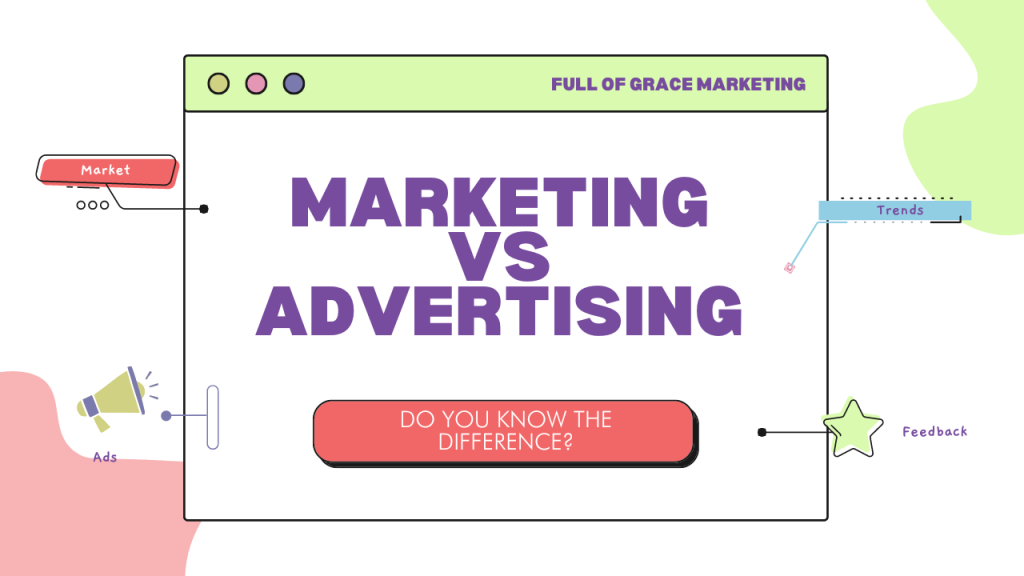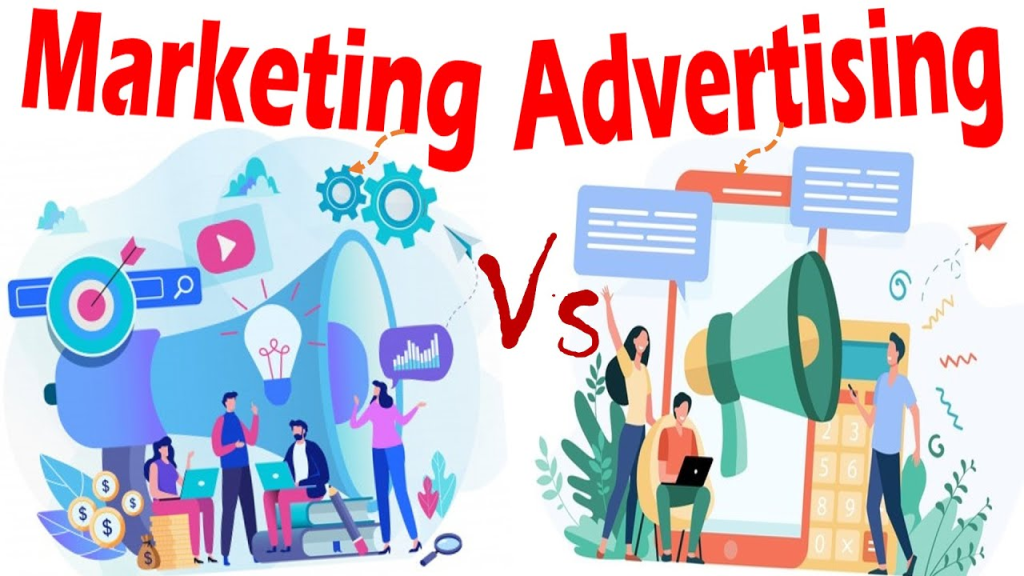While 76% of businesses use both marketing and advertising strategies, only 34% clearly understand how they differ. In this article, we’ll dissect the key differences between marketing and advertising. Whether you’re a business owner, marketer, or student, understanding this distinction will help you allocate resources effectively and create more impactful campaigns.

What Is Marketing?
Marketing encompasses the entire process of creating value for customers, from market research to post-purchase relationships. The 4Ps model (Product, Price, Place, Promotion) developed by Jerome McCarthy remains foundational:
- Consumer behavior analysis
- Brand positioning strategies
- Customer experience management
According to HubSpot’s 2024 Marketing Trends Report, 68% of successful companies align their marketing strategies with long-term business objectives.
What Is Advertising?
The Tactical Execution
Advertising represents the paid promotional component within marketing’s promotion pillar. Key characteristics include:
- Paid media placements (digital, print, broadcast)
- Immediate conversion focus
- Campaign-specific metrics (CTR, ROAS)
Statista projects global digital ad spending to reach $835 billion in 2024, highlighting its critical role in modern business strategies.
6 Key Differences Between Marketing and Advertising
1. Scope and Duration
Marketing: Ongoing process (6-18 month cycles)
Advertising: Time-bound campaigns (typically 1-3 months)
2. Primary Objectives
Marketing: Brand equity building
Advertising: Direct response generation
3. Budget Allocation
Marketing: 10-15% of company revenue (AMA guidelines)
Advertising: 5-8% of marketing budget

4. Measurement Metrics
Marketing: Customer Lifetime Value (CLV), NPS
Advertising: Click-Through Rate (CTR), Conversion Rate
5. Team Structures
Marketing: Cross-functional (product, sales, CX)
Advertising: Specialized (media buyers, creatives)
6. Technology Requirements
Marketing: CRM systems (Salesforce, HubSpot)
Advertising: DSPs (Demand Side Platforms like Google DV360)
How Marketing and Advertising Work Together
The most successful brands integrate both disciplines. Coca-Cola’s “Share a Coke” campaign demonstrates perfect synergy:
- Marketing team identified personalization trend
- Advertising executed through customized bottles
- Resulted in 2% global sales increase (Nielsen data)
2025 Trends to Watch
- AI-powered predictive marketing
- Contextual advertising resurgence
- Blockchain for ad transparency

Understanding the difference between marketing and advertising is crucial for business success in 2024. While marketing builds long-term brand value through strategic frameworks, advertising drives immediate conversions through tactical executions. For optimal results:
- Align marketing strategies with business objectives
- Use advertising to amplify key messages
- Continuously measure and optimize both




